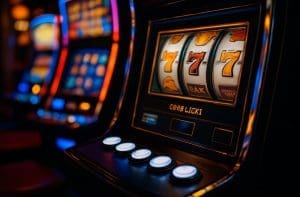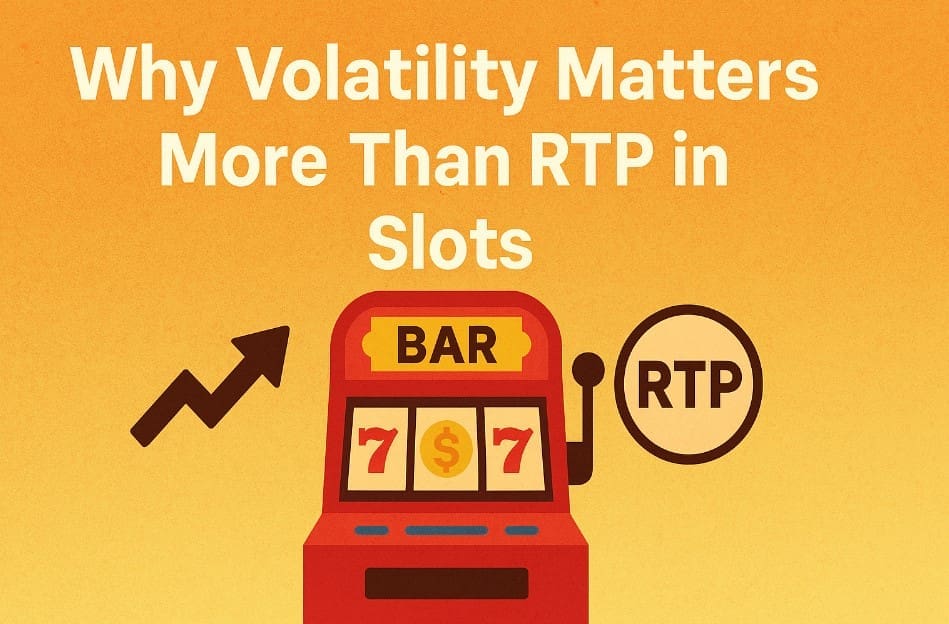Ask ten slot players what matters most in a game and half of them will throw “RTP” at you like it’s gospel. But here’s the thing: RTP is only part of the story. I’ve sat through enough sessions, both in buzzing casinos and at home on my laptop, to know that the real flavor of a slot comes from its volatility. RTP is like reading the nutrition label on a candy bar. Volatility is actually biting into it—you’ll know instantly if it’s sweet, chewy, or breaks your teeth.
What Is RTP in Slots?
Return to player, or RTP, is the percentage a slot is designed to give back to players over a huge number of spins. If you’re playing a 96% RTP slot, the math says you should get $96 back for every $100 wagered—eventually. I emphasize eventually because it’s not about your next hundred spins. It’s millions of spins, simulated and averaged out.
It’s a bit like the “average rainfall” in a city. You might pack an umbrella for your week in London, but if you happen to land during a dry stretch, that statistic isn’t much comfort. RTP works the same way—it describes a climate, not your day-to-day weather.
What Is Volatility in Slots?
Volatility, also called variance, is about rhythm and risk. Low volatility slots hit often with small prizes. High volatility slots test your patience but can drop jaw-dropping wins out of nowhere.
I once tried a new high volatility slot on a Friday night. Forty-five minutes of dead spins. Nothing. I almost closed it when—bam—a bonus feature paid me enough to cover dinner for two. Meanwhile, my buddy at the next laptop was on a low volatility game, grinning as his balance ping-ponged up and down in tiny increments. We both “won,” but our paths there were wildly different.
Volatility Types: Low, Medium, High
Low volatility feels like gentle waves on a beach. You’re rarely knocked off balance, but you also won’t find hidden treasure under the sand.
Medium volatility is that sweet spot—small hits keep you afloat while the occasional bigger payout makes things exciting.
High volatility? That’s the roller coaster you get in line for knowing you might regret it halfway through. Your bankroll might nosedive, but if you hang on long enough, the climb back up can be unforgettable.
The Player Experience: RTP vs Volatility
RTP doesn’t tell you how the game feels. Volatility does.
Take two slots, both at 96% RTP. On one, you’re landing constant little wins, enough to keep your spins flowing and maybe grab a free coffee from the casino floor. On the other, you’re staring down a long dry spell before the reels suddenly light up and triple your bankroll. Same math in the background, totally different evenings.
That’s why I sometimes laugh when people ask, “Is this a good RTP slot?” My answer is usually, “Sure, but can you handle the mood swings?”
Why Volatility Affects Gameplay More Than RTP
When you’re in the middle of a session, RTP isn’t whispering in your ear. Volatility is shouting. It’s telling you whether you should pace yourself or whether you’re in for a gut punch followed by a champagne moment.
I once blew through a bankroll in under twenty minutes on a notoriously volatile slot. Brutal. But another time, I stretched the same amount across three hours on a low volatility game, sipping gin and tonic and enjoying the animations. Neither session had much to do with RTP. Both were all about volatility.
Common Misconceptions About RTP and Volatility
A lot of players assume high RTP automatically equals frequent wins. Nope. I’ve played 97% RTP games that felt like deserts—long, dry stretches where I questioned all my life choices. Conversely, I’ve had a blast on a lower RTP game because it kept feeding me steady little wins.
Another trap is thinking volatility is pure mystery. It’s not. Developers build it into the game’s DNA. If a slot’s described as “high risk, high reward,” take that seriously.
And don’t confuse bonus frequency with RTP. A slot can hand you free spins every twenty rounds and still not budge past 96%. Another slot may barely hand out bonuses but pack life-changing wins into those rare moments.
How to Choose Slots Based on Volatility

The trick is matching volatility to your mood and your budget.
If you’ve only got a small bankroll and just want to enjoy the lights, sounds, and maybe a free drink or two, low volatility is your friend. You’ll get more entertainment time, even if you won’t brag about your winnings.
If you’re chasing that “big story” win—the one you tell your friends about for years—then high volatility is your playground. But keep your wallet in check; these games can be ruthless.
Medium volatility? That’s the middle lane. Great for players who want balance without extremes.
Case Studies: High Volatility vs High RTP Slots
Take Dead or Alive II. Its RTP hovers around 96.8%, but the volatility is brutal. I once watched a friend go silent for two hours, then erupt with joy when his free spins feature landed and multiplied his bet by over a thousand. That’s volatility flexing its muscles.
Now think about Starburst. Same ballpark RTP. But instead of waiting forever for a miracle, you’re showered with small, colorful wins every few spins. It’s light, it’s fun, and it’s hard to walk away feeling cheated—even if you didn’t leave rich.
Tips for Slot Players
When choosing slots, forget the shiny promises of RTP for a moment. Ask yourself: Do I want steady play or am I hunting jackpots?
Here’s a quick way to feel it out: play thirty or forty spins. If you’re seeing regular little wins, you’re in low volatility territory. If you’re staring at an empty screen and wondering whether you’ve offended the slot gods, congratulations—you’ve met high volatility.
Frequently Asked Questions About Slot Volatility
What is slot volatility in plain English?
It’s how risky the game feels. Frequent small wins mean low volatility. Rare, massive wins mean high volatility.
Does higher RTP mean I’ll win more?
Not in the short term. RTP is long-term math. Volatility is what you’ll notice in your actual play.
How can I check a slot’s volatility?
Most providers list it in the info screen. If not, a short session will give you a feel pretty quickly.
Can I outsmart volatility?
Nope. You can only manage your bankroll and pick the style that suits your nerves and wallet.
Which is more important: RTP or volatility?
For real, everyday play, volatility. RTP shapes the long-term, but volatility decides whether your night feels like a joyride or a car crash.


